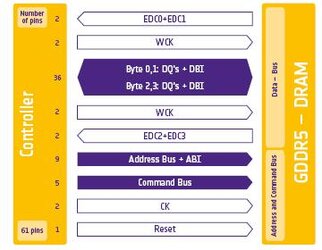- Joined
- Nov 26, 2005
- Location
- Concord, NC
Actually the GDDR5 that ATI is using is quad data rate so QDR. Its shown on the card as 900Mhz stock clock, yet its effective DDR3 speed is 3.6Ghz so overall if you want to be get dirty and "match" it to ddr3 thats where the 2.3Ghz comes from or the 900Mhz which ever you want to consider.
Where does it show 900MHz on the card?
And how is QDR even possible if DDR uses the rising and falling edge of the clock. There's no more edges to work with.

